Coniferous evergreen plants retain decorative all year round. Due to the variety of forms, sizes, the colors of the crown of crowners form a variety of decorative compositions. Pine is a bright representative among coniferous plants, it is not only a beautiful magnificent beauty, but also a source of a pleasant coniferous aroma. It is the opinion that to plant a pine in the site is a complex and ungrateful matter, but this is usually the opinion of inexperienced gardeners who do not know the features of transplanting and growing coniferous plants.
Pine: Description
Pine - evergreen coniferous tree. An exception in the genus of pine is a larch and a pseudolide, as they reset the needles in the fall. In the natural habitat, the pine ordinary reaches a height of 40-50 m. Tree life expectancy - up to 500 years. Pine leaves are a needle 5-7 cm long. The needles are attached to the branch in pairs, the life of the needles is 3-5 years. Decorative varieties of pine are both wood and shrub shape.
Pine cones have an egg-shaped form, as a rule, dumped. Consist of scales hiding seeds. First, the bumps are dense, closed, then when the seeds ripen, scales open.
Pine: landing
Pine landing time
The optimal time for planting coniferous trees is either Spring, the end of April is the beginning of May, or autumn, the end of September - the beginning of October. With a later landing, the tree will not have time to adapt in a new place and prepare for winter, as a result of which a young seedling can perish.
Choosing a seedling pine
There is one very important rule that applies to all conifers without exception: the sapling is acquired only with a closed root system, in the container.
Advantages of a seedling in a container:
- well-developed root system,
- one piece of land protects the root system from damage,
- on the roots of the seedling, microorganisms are preserved, which are needed by a tree to absorb from the soil of minerals and moisture.
The fact is that the bacteriums needed a pine tree live on the roots and dying outdoors in 10-15 minutes, therefore it is believed that the roots of coniferous plants die in the air in 15 minutes. This is not quite so, after 15 minutes in the air, the roots of the plant are still alive, but the rooting of such a seedling is significantly lower than that of pine from the container. Seduzhability of a seedling with an open root system is low.
Do not choose too much sapling than younger plant, the faster it adapts to new conditions. The optimal age of a seedling for landing is up to 5 years.
Pine landing place
- Pine grows well and develops on lighted solar plots, it is also allowed to land in the half. The tree planted in the shadows grows slowly, the color of the needles are not so bright, besides, the crown of such a plant is more sparse.
- When preparing the landing pit, focus on the size of the container with a seedliness. The pit is digging more container: 15-20 cm in diameter, 20-30 cm deep.
- Pine is poorly tolerates stagnation of water, so if the groundwater is too close to the surface, drainage provides in the landing room. To do this, at the bottom of the landing pit, a layer of clay or gravel with a height of 5-10 cm is poured.
- The drainage layer falls asleep soil, which is desirable to enrich minerals or to replace the pre-prepared soil at all. For her preparation mixed turfs, sand and peat in a ratio of 3: 1: 1. Pine - the plant, undemanding to the composition of the soil, but for good rooting and rapid development it is recommended to ensure a small tree with the useful substances at first.
Pine landing
- The pit is filled to the level needed to accommodate a pine seed with an earthen room.
- The plant is neatly removed from the container and placed in the pit, trying not to damage the earthen com.
- It is necessary to perch so that the root cervix is \u200b\u200blocated on the same level with the surrounding soil, so the land in the pit before landing the tram, so that it does not dare and the neck of the seedlings will not be too low. It is better to even plant a plant slightly above the level with the calculation that the soil in the landing pit is still asced.
- The space in the pit around the seedling falls asleep with a fertile mixture and trambet.
- Formed a slight recess to relieve irrigation so that the water does not spread.
- Immediately after landing, the seedling is watered well. Water is poured not only on the ground, but also on the crown of watering can with a sprayer, as all coniferous plants love sprinkling.
Pine: growing and care
The young tree is pretty demanding both to watering and to protect against the sun and frost. Adult pine care practically does not require.
Watering pines
In different periods of the tree's life, the need for watering changes. Young, only landed trees, watered once a week. At the same time, watering is quite abundant, 1-3 buckets of water pour under one tree. Adults, already rooted plants, watered only 2-3 times per season. Under one tree poured 5-10 buckets of water. If possible, water and the crown of the tree. Watering sprinkling in the evening, after sunset. In the summer, it is desirable to do it as often as possible, since coniferous poorly carry dry sultry air.
Substurice pine
- Despite the fact that an adult plant does not require feeding, it is better growing and a well-kept tree looks. Compost - perfect fertilizer for conifers. According to the compost, the closest to the soil in which pine is growing in a natural habitat. Before making feeding, the propeller circle loosened on a small depth, add compost to loose ground and mixed. When loaned, it is worth considering that part of the root system of the plant is close to the surface.
- Mineral feeders spend once a year, while fertilizers scatter on a rigorous circle, pour themselves. Fertilizer rate is calculated based on the instructions. Mineral fertilizers do not contribute in the fall, this is due to the fact that conifers - evergreen plants, and fertilizers provokes the growth of shoots. Young twigs will not have time to crumble and warm to frosts, so they will die.
Sungal pine
The rolling circle of young pine should be kept clean from weeds. The land is regularly examined and stole or break. Insect pests can live on weeds, or weeds may be carriers of diseases that are subject to conifers. In addition, thick thickets interfere with ventilating and create favorable conditions for the development of fungal diseases. Weoling spend on a small depth so as not to damage the roots of the tree. Mulching of the priority circle allows you to reduce the number of weeds. As a mulch, in addition to peat, they use a crushed bark of coniferous trees, dry leaves.
Trimming pine
If necessary, the shape of pine is adjusted. Sometimes the tree develops asymmetrically, or individual twigs are knocked out of the total trees. In this case, the aesthetic trimming is carried out. Extra sprigs are coated or pinch. So that Croon Pine was thick and magnificent, in May-early June, the tips of young shoots are pinching, it will redirect the juices of the plant on the formation of side shoots and will stop the growth of the central one.
In the spring, the tree is examined for the presence of broken, dried twigs. Damaged parts of the tree cut.
Pine preparation for winter
Before the initiation of the first frost, the root system of the young plant is covered with a layer of peat 5-10 cm. Mulching will help ensure a comfortable temperature of the root system and retain the necessary moisture both in winter and in summer heat. In the first years of life in the northern regions, young conifers are covered with a sweetheart to keep the seedling during severe frosts from frostbite.
Often coniferous plants suffer from sunburn. Especially high probability of burns of early spring at the first bright sun. Young plants in such periods are hiding under the underfloor material.
Pine: reproduction
The most common and natural way of reproduction, to which pines multiply and in natural conditions - reproduction by seeds. The germination of fresh, mature pine seeds - up to 90%. Seed seeds in pre-harvested beds in the fall so that they are stratification by cold in winter. In the garden, the seeds are covered with a layer of soil 1 cm and slightly tamper.
Despite the fact that the germination of seeds is high, the loss of seedlings during growing is high. Young gentle shoots need to shape and regular watering. On the second year of life, the seedling looks like a twig, the first side shoots appear on the plant for the third year.
It is possible to germinate seeds and at home. In this case, at the end of January, the seeds are sent to the refrigerator to stratification, in April prepare drawers with loose turf soil and sow seeds. From above, crops are coated with a layer of peat 1 cm, a fitting container is covered with a film, providing a greenhouse effect to accelerate the germ. For such a sediment, the pines make it easier to care and provide the necessary temperature regime. In planting tanks, seedlings remain 2-3 years, and only then the plants are planted into the open ground. When transplanting the roots of seedlings do not bargain, carrying a seedling to a new place along with part of the soil from the box.
Decorative forms of pine are breeded by vaccination. Seeders of pine seedlings about 4 years are used as a flow. This method of reproduction allows you to get on the grafted plant all the varietal qualities of the maternal tree, from which the cutlets were taken to give.
With the help of shilling pine, it is not multiply, since the pine cuttings are rooted badly.
Classification of pine
According to classification, pine family includes 11 clans and 252 species of plants. Consider some interesting representatives of the genus:
- Fir - a tree with bumps growing vertically. Fir bumps are very similar to cedar. Most of the types of fir is heat-loving, have low frost resistance. Demanding of the composition and humidity of the soil. Shadowish tree.
- Kataya is currently growing only in some areas of China. In the distant past grew in Canada, Russia, Europe. Cracking Katei is prohibited by law.
- Cedar is a high conifer tree with a scattered crown. Cedar cones are a reprehension, the base is surrounded by bundles of needles. It feels well on poor lime soils without water stagnation. In natural conditions, it is found in the Crimea, in the mountainous areas of the Mediterranean.
- Larch is a common tree both in Russia and in the world. The needle of the larch annually falls. The cheops are soft, bright green. The light-affilome and fast-growing tree, capable of growing more than 50 cm in more than 50 cm in the year. Resistant to frosts, undemanding to the soil composition.
- Tsuga is a tree with an unusual cheese and hanging branches. Couplings in most types are flat, with a whiten strip on the bottom side. Small bumps, ripen over the year, but fall on the second.
Diseases and pests pine
In the spring, pine inspects for damage to the bark or needles, since the change in the needle of the needles may indicate the beginning of the disease.
Pest pests
- Elor-fir-fir hurmes - pest, which causes the yellowing of the needles. His colonies look like white wool covering the chevings. To combat pests in April, the treatment of wood insecticides is processed.
- A spruce ordinary sawmaker - the pest eating a cheva. The sign of the defeat is the rose, as if undehent, young shoots, bare branches without needles. For the struggle, Fufanon is well suited, the drug is divorced by instructions.
- Coroed - a small beetle up to 5 mm, tearing through the woods and laid eggs there, from which a whole colony of beetles appear. Coroes are able to completely destroy the tree for the month. When holes in the wood, the surface treatment of insecticide insecticide is ineffective. Additionally, it is necessary to water the wood with drugs, as well as enter them into the inlet holes of the beetles. At the same time, surface treatment insecticides is carried out weekly, the barrel and tree branches are carefully processed. Trees that failed to save, burn.
Pine Diseases
- Schuce ordinary is a fungal disease, in which brown specks appear on the needles first, which at first can not be noticed. Over time, the lesion area increases, the stains grow up, yellow, then drill, the needles are satisted, mushrooms are formed in the branches in the form of dark formations of different shapes. To combat the disease, autumn treatment with colloidal gray or burgue liquid is used.
- Rust pine is manifested by orange spots, swollen on shoots. An dangerous disease that quickly covers the plant and can transfer to neighboring. With a strong damage, the sore branches cut off, or the tree hardened to protect the rest of the robbery from the disease. To combat use the same means as to combat Schute.
Pine's disease is better to warn better than to treat the consequences, therefore it is recommended to handle the Bordeaux liquid all the conifers in the fall for prevention.
Pine: photo
Pine Mountain Pug
Fir Korean
Yel Serbskaya
Cedar
Japanese larch
Compositions using coniferous
Pine is a valuable fairly common coniferous tree. A variety of species and varieties allows for individual needs to pick up both a shrub shape of a tree for a small garden or cottage and gorgeous forest beauty for greening park, square.

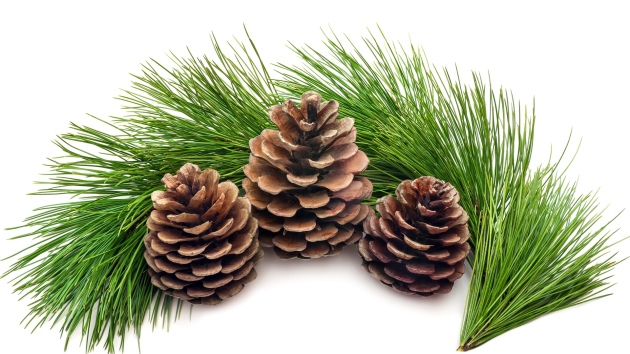
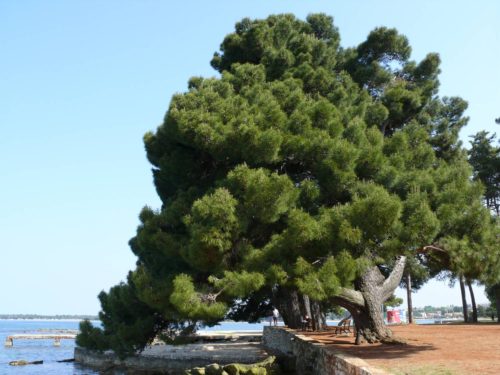
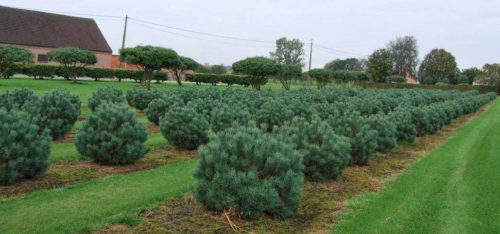
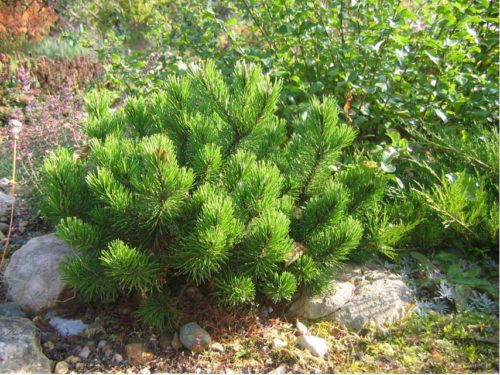
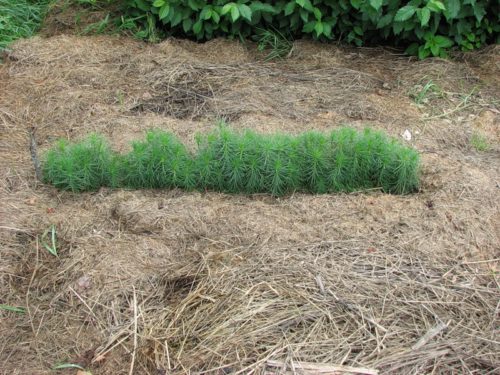
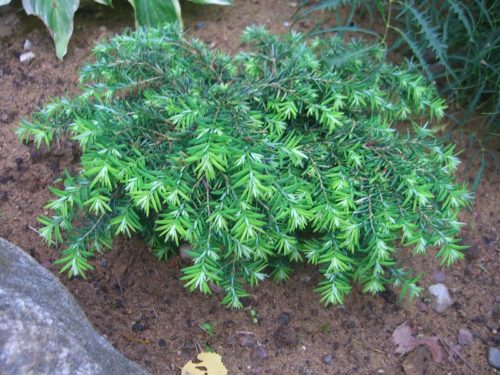
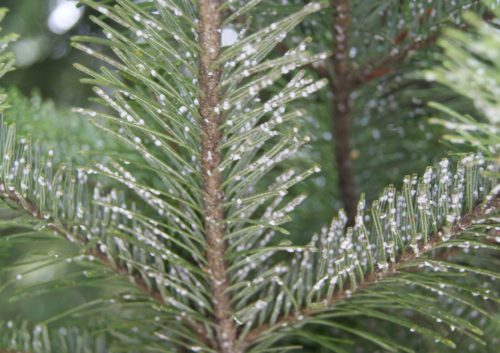
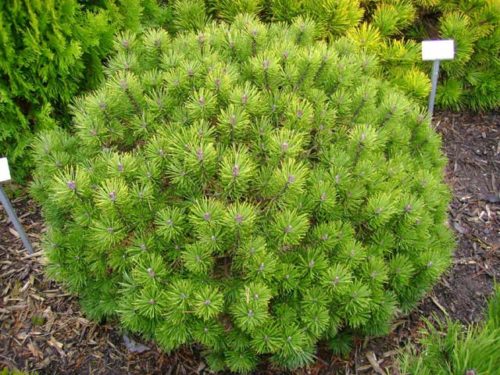
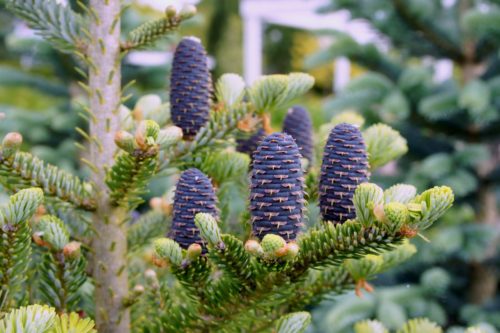

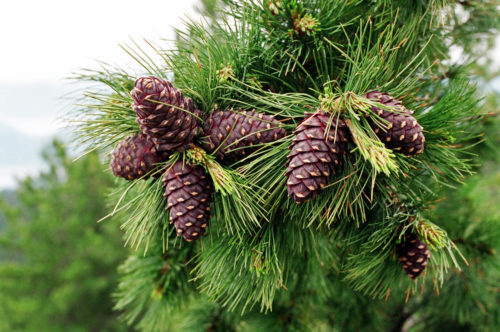
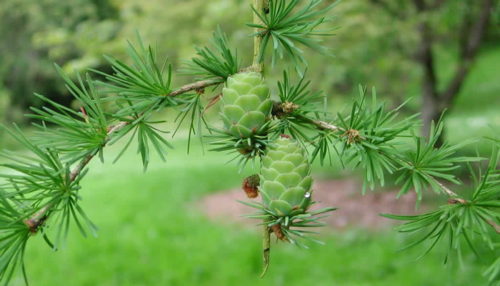

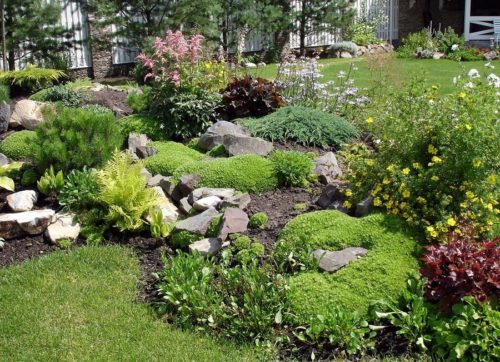












 Start a discussion ...
Start a discussion ...